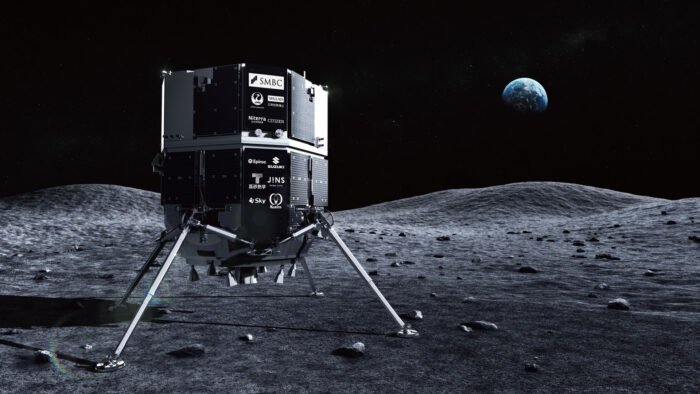Satellite Communications Market Map Series
The Space Impulse team, led by Market Analyst Anup Gholap, is developing a comprehensive series of market maps exploring the diverse sectors within satellite communications. This ongoing project aims to provide in-depth analysis and insights into each critical component of satellite communication (SATCOM) systems, from antennas to ground stations and everything in between.
This is part 3/8 of the series.
Satellite communication is a cornerstone of modern connectivity, enabling a wide range of applications from global internet access to secure military communications. In this ongoing market map series, we will dive into the intricate components of SATCOM systems, exploring their functionalities and the key companies and organizations within each sector. Each installment provides detailed insights into specific components, explaining their roles and significance in the broader satellite communication landscape. These market maps serve as a valuable resource for industry professionals, investors, and anyone interested in understanding the complex ecosystem of satellite communications.
Please Note: the satellite communications industry is rapidly evolving, with new companies and technologies emerging regularly. While we strive to provide the most comprehensive and up-to-date information, we acknowledge that our list may not be exhaustive. If you notice any missing entities or have additional information that could enhance our market maps, we encourage you to connect with the Space Impulse team at [email protected]. Your input is valuable in helping us maintain the accuracy and relevance of our resources.
Stay tuned as we continue to explore each sector of the satellite communications industry, providing you with the insights needed to navigate this dynamic and crucial technological landscape.
GNSS Receivers and SATCOM User Terminals
The GNSS Receivers and SATCOM User Terminals sector forms a critical foundation for modern satellite communication and navigation applications. GNSS receivers offer pinpoint positioning and timing information through satellite constellations, while SATCOM user terminals facilitate vital two-way communication in locations beyond the reach of conventional networks. This article explores key definitions, trends, and technological advancements shaping this sector, which continues to fuel transformative capabilities across industries from autonomous vehicles to global connectivity solutions.
GNSS Receivers: Enhanced Precision through Multi-Frequency and Multi-Constellation Capabilities
GNSS receivers are specialized devices that harness the power of satellite constellations, including GPS, GLONASS, BeiDou, and Galileo, to provide precise positioning and timing information. Traditionally, these receivers depended on one satellite system, but the integration of multi-constellation capabilities now enables them to access signals from multiple networks. This change increases accuracy, availability, and reliability—key attributes for industries reliant on consistent positioning. For instance, in autonomous vehicles, even a minor disruption in GNSS data can lead to inaccuracies; with multi-constellation support, continuity of service is virtually guaranteed.
The emergence of multi-frequency technology in GNSS receivers further enhances precision. By accessing signals across various frequency bands (such as L1, L2, and L5), these receivers effectively mitigate common positioning errors caused by ionospheric delays or multipath interference. This leads to centimeter-level positioning accuracy, which is critical for applications like precision agriculture, where equipment relies on exact location data for tasks such as planting and harvesting.
Another significant trend is the integration of GNSS with other technologies, including Inertial Navigation Systems (INS). This combination enhances performance in challenging environments like dense urban areas or tunnels, where satellite signals may be weak or temporarily unavailable. Software-defined receivers (SDRs) are also gaining traction, offering adaptability by allowing for updates to new signals and frequency bands through software alone. This future-proofs GNSS receivers, reducing the need for costly hardware replacements in response to evolving satellite technologies.
SATCOM User Terminals: Supporting High-Bandwidth Applications and Global Connectivity
SATCOM user terminals, responsible for ground-based communication with satellite networks, are indispensable in enabling connectivity in remote areas or industries with unique demands. These terminals are critical in settings such as maritime navigation, aviation, and disaster response, where conventional connectivity is often unavailable. The latest progress in SATCOM terminals respond to the growing need for high-throughput satellite (HTS) support, which provides higher data rates and allows for bandwidth-intensive applications, from video streaming to data-driven remote sensing.
One of the most exciting developments in SATCOM technology is its integration with 5G networks. With this functionality, SATCOM user terminals enable seamless transitions between satellite and terrestrial networks, ensuring continuous connectivity. This is invaluable in sectors like emergency response, where communication must be maintained at all times, regardless of cellular network availability.
Manufacturers are also focusing on power efficiency in SATCOM user terminals, especially with the rise of IoT and portable devices. Energy-efficient techniques, such as snapshot positioning—capturing satellite signals in short intervals—and cloud-based processing, significantly reduce power consumption without sacrificing performance. This is essential for remote sensors and portable terminals that operate on battery power, allowing them to function effectively over extended periods without frequent recharging.
Future Outlook
Both GNSS receivers and SATCOM user terminals are experiencing rapid innovation, reflecting the increasing demand for precision and connectivity in various sectors. GNSS technology is progressively incorporating multi-frequency and multi-constellation capabilities, enabling it to support applications requiring precise geolocation data. Meanwhile, SATCOM terminals are focusing on achieving high data rates and integrating with 5G, which will expand the possibilities for remote and mobile connectivity. The convergence of these technologies with IoT and other emerging fields indicates sustained growth potential, particularly in environments where traditional infrastructure falls short.
Key Players in the GNSS Receivers and SATCOM User Terminals Market
The GNSS Receivers and SATCOM User Terminals market is shaped by a mix of well-established enterprises and innovative startups, each contributing to global communication and precise navigation. Here is a closer look at some of the leading players in this evolving sector:
Top Enterprises Driving the Market
Honeywell
Honeywell stands as a powerhouse in aerospace and advanced technology, leveraging decades of expertise to provide state-of-the-art GNSS and SATCOM solutions. The company’s systems are highly valued in critical markets, including aviation, defense, and industrial applications, where accuracy, reliability, and high performance are paramount. Honeywell’s commitment to precision and safety is evident in its comprehensive product offerings, which support everything from aircraft navigation to global communications infrastructure. As the demand for more robust and adaptable GNSS technology grows, Honeywell remains at the forefront, innovating to meet the evolving needs of the industry.
Airbus
Airbus is a global leader in aerospace innovation, with a formidable presence in both satellite communications and navigation technology. The company has developed a range of integrated systems that power applications across multiple sectors, including aviation, maritime, and space exploration. Airbus’ GNSS receivers and SATCOM terminals are known for their precision and reliability, often playing a vital role in critical missions that demand seamless and secure communication. With a strong emphasis on sustainability and technological advancement, Airbus continues to shape the future of space and satellite communications through strategic partnerships and groundbreaking research initiatives.
Promising Startups Transforming the Sector
EnduroSat
EnduroSat has emerged as a game-changer in the small satellite and communication market, focusing on delivering compact, efficient solutions tailored for the NewSpace economy. The startup is making waves with its innovative approach to satellite technology, providing accessible and scalable solutions for data transmission and space exploration. EnduroSat’s products are designed to support a wide array of missions, from scientific research to commercial data relay, making satellite communication more affordable and versatile. Their commitment to pushing the limits of satellite performance has earned them recognition among industry leaders and customers alike.
Syrlinks
Syrlinks is carving out a significant niche in the GNSS and SATCOM landscape with its high-performance radiofrequency equipment, used extensively in space missions and industrial applications. The startup has contributed to several high-profile space projects, providing reliable communication systems that operate under extreme conditions. Syrlinks’ products, known for their robustness and energy efficiency, are well-suited for small satellites and remote sensing missions. As satellite technology continues to evolve, Syrlinks is well-positioned to drive further innovation, especially in designing systems that enhance connectivity and data transmission in challenging environments.
SkyFox Labs
SkyFox Labs is an emerging player focused on next-generation GNSS and SATCOM technology. With a mission to develop efficient and reliable communication systems, SkyFox Labs addresses the growing need for advanced satellite solutions in sectors such as aerospace and global logistics. The startup emphasizes flexibility and cost-effectiveness, creating products that adapt to the diverse demands of modern satellite communication. SkyFox Labs’ forward-thinking approach is reshaping the landscape, particularly as the industry seeks more agile and energy-efficient technologies to meet the demands of a rapidly expanding global user base.
If you would like more information about the full analysis for all ~70 satellite radio technology entities, including revenues, space heritage, funding and more – please leave your details here.
The GNSS Receivers and SATCOM User Terminals market is seeing progression driven by the increasing demand for high-precision positioning and reliable global communication. Many of the sector’s companies are emphasizing multi-constellation, multi-frequency GNSS systems and high-throughput SATCOM technology, highlighting the industry’s focus on accuracy and connectivity.
The rapid integration of GNSS with technologies like Inertial Navigation Systems and the emergence of software-defined radios signal a push toward more adaptable and future-proof systems. Meanwhile, the SATCOM market’s pivot toward compact and power-efficient terminals capable of seamless 5G integration is addressing the global need for uninterrupted communication, even in the most remote areas.
Together, these developments reflect a market that is balancing traditional expertise with innovative advancements. As the sector evolves, both established companies and newer players are finding ways to drive growth, improve performance, and deliver solutions that cater to increasingly diverse and complex applications. The future of GNSS and SATCOM technology will likely be defined by this ongoing interplay between proven reliability and forward-thinking adaptability.
Share this article:










